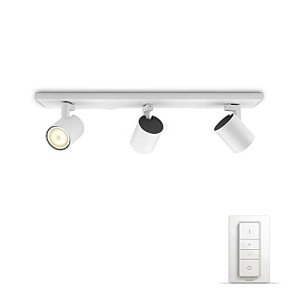Industrial Lamps in the UK: Illuminating Industries and Workspaces
In an age where efficient lighting solutions play a pivotal role in improving productivity and safety in different industrial settings, industrial lamps have actually emerged as important tools for factories, storage facilities, workshops, and more. The UK's market for industrial lighting is rapidly evolving, driven by developments in innovation, a growing focus on energy performance, and strict safety regulations. This post explores the different types of industrial lamps readily available in the UK, their applications, and the factors to consider that should be made when choosing the suitable lighting options for industrial environments.
Understanding Industrial Lamps
Industrial lamps are designed particularly for usage in a range of industrial settings. They offer the needed illumination while also considering the special challenges positioned by such environments, consisting of dust, wetness, high ceilings, and variable temperatures. Industrial lamps are available in numerous forms, including LED, fluorescent, and metal halide lighting, each with its own set of qualities and advantages.
Kinds Of Industrial Lamps
LED Industrial Lamps:
- Description: LED (Light Emitting Diode) industrial lamps are energy-efficient, lasting, and supply excellent lighting.
- Benefits:
- Energy effectiveness (up to 80% less energy consumption)
- Long life-span (up to 50,000 hours)
- Low heat emission
- Instant brightness without any flickering
- Applications: Factories, storage facilities, and building websites.
Fluorescent Industrial Lamps:
- Description: These lamps produce light through the excitation of gas, typically utilized in environments requiring consistent lighting.
- Benefits:
- Good color rendering
- Cost-efficient
- Numerous sizes and shapes
- Applications: Workshops, garages, and assembly lines.
Metal Halide Industrial Lamps:
- Description: This kind of gas discharge lamp produces a brilliant, white light and is often used in big spaces.
- Benefits:
- High intensity and brightness
- Outstanding for sports venues, parking area, and large industrial facilities
- Applications: Warehouses, loading docks, and outdoor locations.
Comparison Table of Different Types of Industrial Lamps
| Lamp Type | Energy Efficiency | Life-span | Brightness | Application Areas |
|---|---|---|---|---|
| LED Industrial Lamps | Approximately 80% | Up to 50,000 hours | Very High | Factories, Construction Sites |
| Fluorescent | Moderate | 7,000 - 15,000 hours | Moderate to High | Workshops, Garages |
| Metal Halide | Moderate | 15,000-20,000 hours | High | Warehouses, Outdoor Areas |
Picking Industrial Lamps
When picking industrial lamps, numerous elements need to be thought about. These consist of:
- Type of Application: Different areas have varying lighting needs. For circumstances, high-precision tasks may require brighter, more focused lighting compared to basic workspace illumination.
- Energy Efficiency: With increasing energy costs and ecological concerns, picking lamps with high energy performance can cause significant expense savings over time.
- Life expectancy: Longer-lasting lamps decrease upkeep costs and downtime, making them more suitable in busy industrial settings.
- Safety Standards: Compliance with safety regulations is crucial. Industrial lamps must be designed to withstand severe conditions, including moisture, dust, and impacts.
- Cost: While upfront expenses matter, the long-lasting savings attained by means of energy-efficient and long-lasting lamps ought to likewise be considered.
Advantages of Appropriate Industrial Lighting
- Enhanced Safety: Proper lighting minimizes the risk of accidents and injuries in industrial environments.
- Increased Productivity: Adequate lighting promotes much better visibility, assisting in the efficiency of employees.
- Expense Savings: Energy-efficient lamps result in lower electrical energy expenses and less frequent replacements.
- Enhanced Quality Control: Good lighting enables better inspection procedures, ultimately boosting product quality.
Frequently Asked Questions (FAQs)
Q1. How do I determine the best type of industrial lamp for my facility?A1. Evaluate the particular lighting requirements and conditions of your center. Think about aspects such as the tasks being carried out, the size of the space, and any regulatory requirements.
Q2. Are LED lights worth the financial investment in an industrial setting?A2. Yes, LED lights offer significant long-term cost savings due to lower energy usage and longer life-spans, making them an affordable alternative in the long run.
Q3. Can I set up industrial lamps myself?A3. While some individuals may have the abilities to install lamps, it is frequently recommended to hire a certified electrician to ensure compliance with security requirements and local policies.
Q4. What upkeep is required for industrial lamps?A4. Routine assessments for damage, cleaning of lighting fixtures, and prompt replacement of malfunctioning lamps are necessary to maintain optimal performance.
Q5. What are the newest patterns in industrial lighting technology?A5. Interior Lighting UK in smart lighting systems, consisting of IoT (Internet of Things) integration and sophisticated energy management services, are at the forefront of industrial lighting development.
The ideal industrial lamps are vital to ensuring security, productivity, and cost performance in numerous industrial settings. The UK market provides a range of lighting services, from LED lamps to fluorescent and metal halide alternatives, each ideal for different applications. By understanding the features and advantages of these lighting types and taking essential factors to consider into account, organizations can make informed choices that will brighten their work areas efficiently while enhancing performance and saving costs. Buying the right industrial lighting not only boosts total ambiance however also fosters a safer and more efficient work environment.

